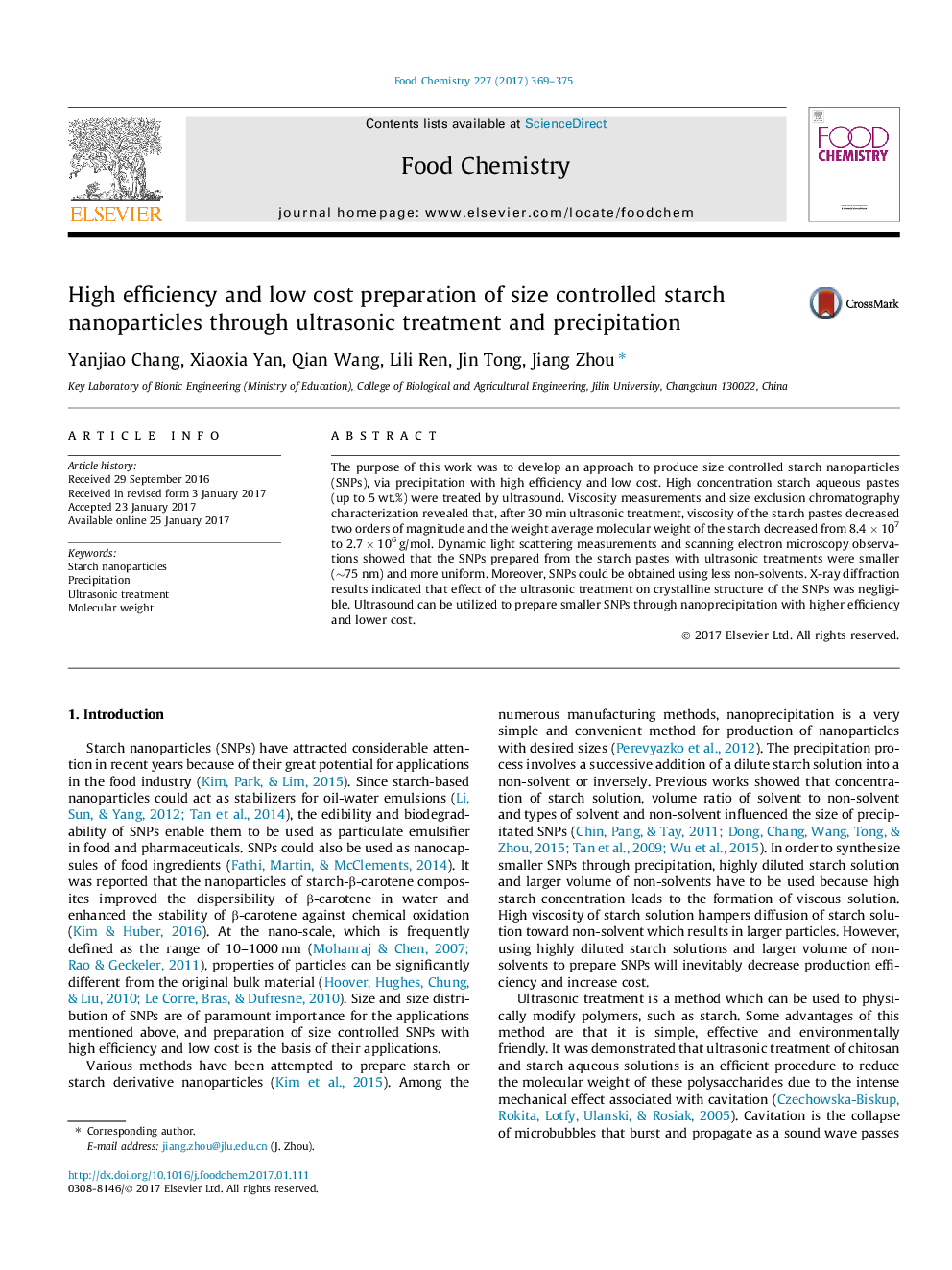| Article ID | Journal | Published Year | Pages | File Type |
|---|---|---|---|---|
| 5133305 | Food Chemistry | 2017 | 7 Pages |
â¢Starch aqueous solutions were treated by ultrasound for different periods of time.â¢The ultrasonic treatment led to decrease in viscosity and starch chain scission.â¢Starch nanoparticles (SNPs) were prepared through nanoprecipitation.â¢The ultrasonic treatment gave the SNPs smaller size and narrower size distribution.â¢Ultrasonic treatment can be used to overcome the shortcomings of nanoprecipitation.
The purpose of this work was to develop an approach to produce size controlled starch nanoparticles (SNPs), via precipitation with high efficiency and low cost. High concentration starch aqueous pastes (up to 5Â wt.%) were treated by ultrasound. Viscosity measurements and size exclusion chromatography characterization revealed that, after 30Â min ultrasonic treatment, viscosity of the starch pastes decreased two orders of magnitude and the weight average molecular weight of the starch decreased from 8.4Â ÃÂ 107 to 2.7Â ÃÂ 106Â g/mol. Dynamic light scattering measurements and scanning electron microscopy observations showed that the SNPs prepared from the starch pastes with ultrasonic treatments were smaller (â¼75Â nm) and more uniform. Moreover, SNPs could be obtained using less non-solvents. X-ray diffraction results indicated that effect of the ultrasonic treatment on crystalline structure of the SNPs was negligible. Ultrasound can be utilized to prepare smaller SNPs through nanoprecipitation with higher efficiency and lower cost.
